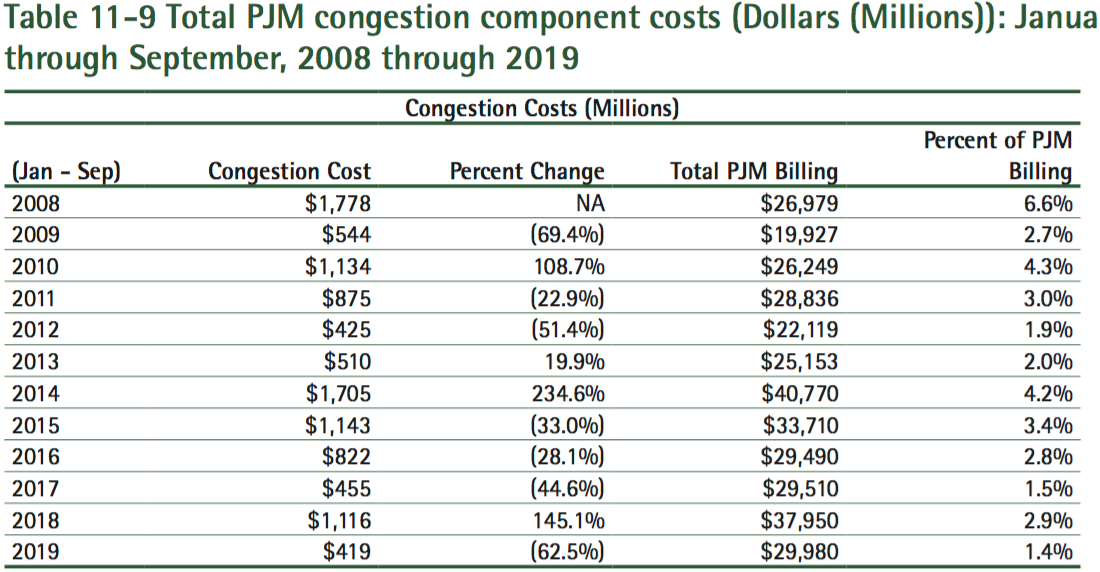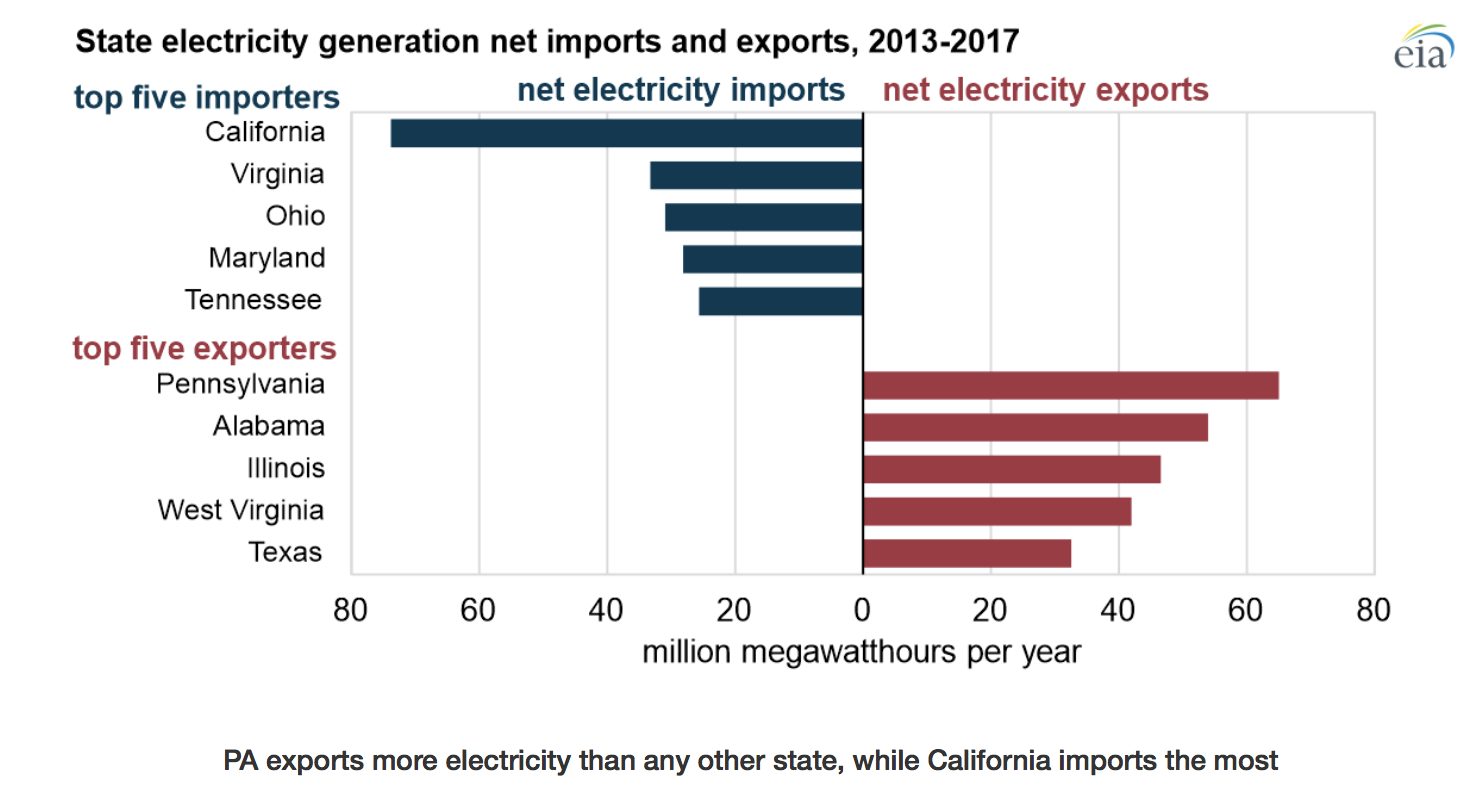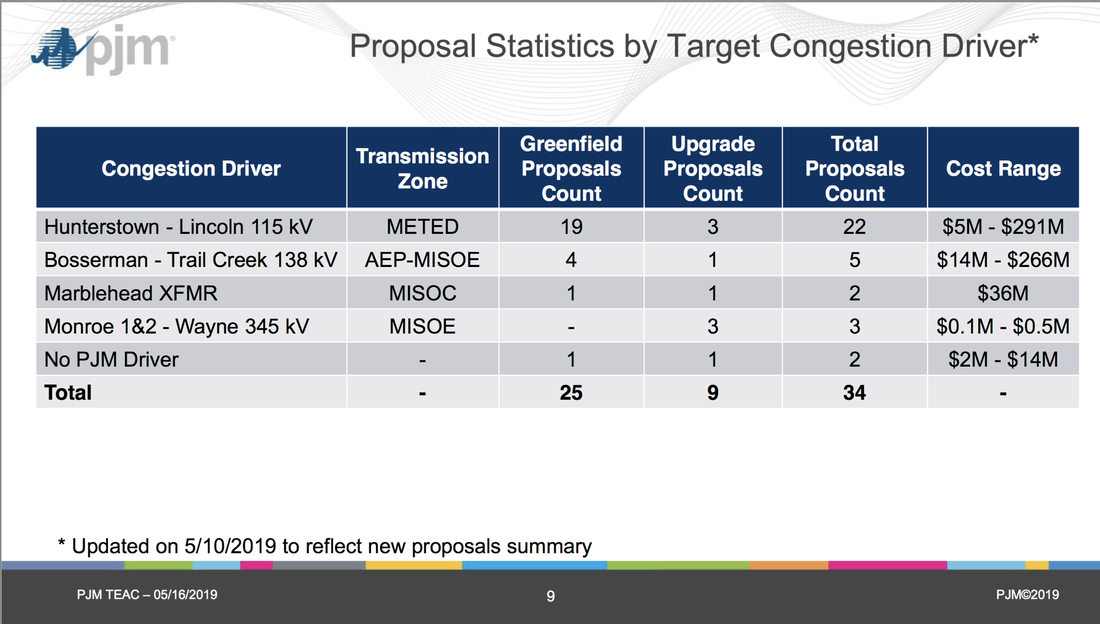But that's an aggregate, where the more beneficial rebuild projects bolster the low numbers of the IEC. And then it goes into a whole big, scary scenario of what could happen if the IEC is cancelled entirely:
It is important to note that if Project 9A or Alternative Project 9A were to be removed from further consideration, PJM’s RTEP analysis has previously identified a number of reliability criteria violations starting in the 2023 study year. Some of these reliability criteria violations include conductor overloads on 500 kV transmission lines which, in PJM’s experience, are likely to be resolved only through the construction of additional greenfield transmission. Should these combinations of projects inclusive of Project 9A or Alternative Project 9A be removed from the RTEP, resultant reliability criteria violations would be identified during the 2020 RTEP analysis, and potential solutions to such reliability criteria violations would not be identified to the Board until late 2020 or early 2021. Furthermore, removing these combinations of projects from the RTEP would fail to address the congestion that would be re- introduced into South-central Pennsylvania and Northern Maryland. Any proposal window to address this re-introduced congestion would not be held until 2021, with solutions not likely to be presented to the Board until late 2021. In light of this timing, and based on the likely need for greenfield transmission, PJM predicts that new CPCN applications for not-yet-identified reliability and market efficiency drivers would not be filed until 2022 or 2023. Conservatively assuming one to two years for state siting proceedings, reliability and market efficiency solutions likely could not be constructed sufficiently quickly to remediate reliability criteria violations, and further would leave customers subject to significant congestion for a number of years to come.
1. IEC would relieve looming (but vague) "reliability" issues that may crop up later, so let's go ahead and build it anyhow. You'll never be able to specifically identify the "reliability" issue that was solved, because it will never occur.
2. PJM has identified "conductor overloads" on some 500-kV lines that can only be solved by new greenfield transmission. Oh, baloney! PJM has used this excuse before as a reason to build the PATH 765kV transmission line 10 years ago. Turns out PJM was all wet... a rebuild of an existing 500kV transmission line was accomplished that increased the capacity of the line enough to obviate PATH. It's just not true that 500kV lines cannot be taken out of service for rebuilds. It happened, despite PJM's claims to the contrary.
3. It's going to take too long to come up with an alternative using PJM's competitive transmission process. Seems like this is YOUR fault, PJM! Meanwhile...
4. Consumers would suffer, horribly SUFFER, from extreme congestion while PJM's long-winded transmission competition process takes place. Except we learned recently that congestion in PJM is at a record low.
Now, why did PJM think it was necessary to include a paragraph of fluff arguing against cancelling IEC? Dr. Freud... paging Dr. Freud... PJM sure spent a lot of time defending against cancellation. Must mean it's a real possibility!
Nowhere in this white paper did PJM evaluate what may happen to congestion or benefit cost ratios if it only undertook the rebuilds by themselves. This is the six hundred million dollar question... Would the two rebuilds accomplish enough on their own? How much does IEC drag down the economic benefit of the rebuilds? PJM chose not to examine the elephant in the room.
Meanwhile, back at the ranch, one of the "beneficiaries" of the IEC project doesn't want to pay for it. The DC Office of People's Counsel recently filed a petition to intervene in the Maryland PSC case considering the IEC. The DC OPC has done the math (apparently using a calculator as defective as PJM's that came up with a cost of $170,915,03) and decided that maybe the cost is too great for DC's ratepayers. The OPC seems rather stuck on the cost of the western segment of the project, which it dubs "ICE West." I'm guessing OPC objects to paying $55M for a project located in Franklin County, Pennsylvania, located in the outer reaches of lower Slobovia, where no ratepayer from DC would dare to tread. Franklin County is nowhere near DC, so maybe they can't see any benefit from building a transmission line there.
Under the cost allocation formula attached as Exhibit B to the October 17, 2019 Petition
for Adoption of Settlement, PEPCO zone would be allocated Net Load Payment equal to 20.23% of the total costs for the Independent Energy Connection West (“ICE West”)
project under PJM analysis dated September 25, 2019. This represents a net present
value of $170,915,03, based on current assumptions.
District ratepayers represent approximately one-third of the load in PEPCO zone and
thus would be responsible for approximately one-third of any costs allocated to that
zone. Under current assumptions for the ICE West project, that would amount to a cost
allocation to District ratepayers of more than $55 million.
At any rate, this petition from one of the supposed "beneficiaries" of the IEC definitely complicates things at the MD PSC. Just when Transource thought it had slayed all the dragons in Maryland by paying people off with ratepayer cash... Maybe the smell of free money was so pervasive that they even got a whiff of it in DC? The ratepayer-funded jackpot line forms to the left... who's next in line?
Let's face it... the IEC project has outlived its usefulness. Opposition is a snowball, and it's rolling down hill. If PJM doesn't get out of the way, it's going to be crushed. It's time to abandon Transource IEC.




 RSS Feed
RSS Feed